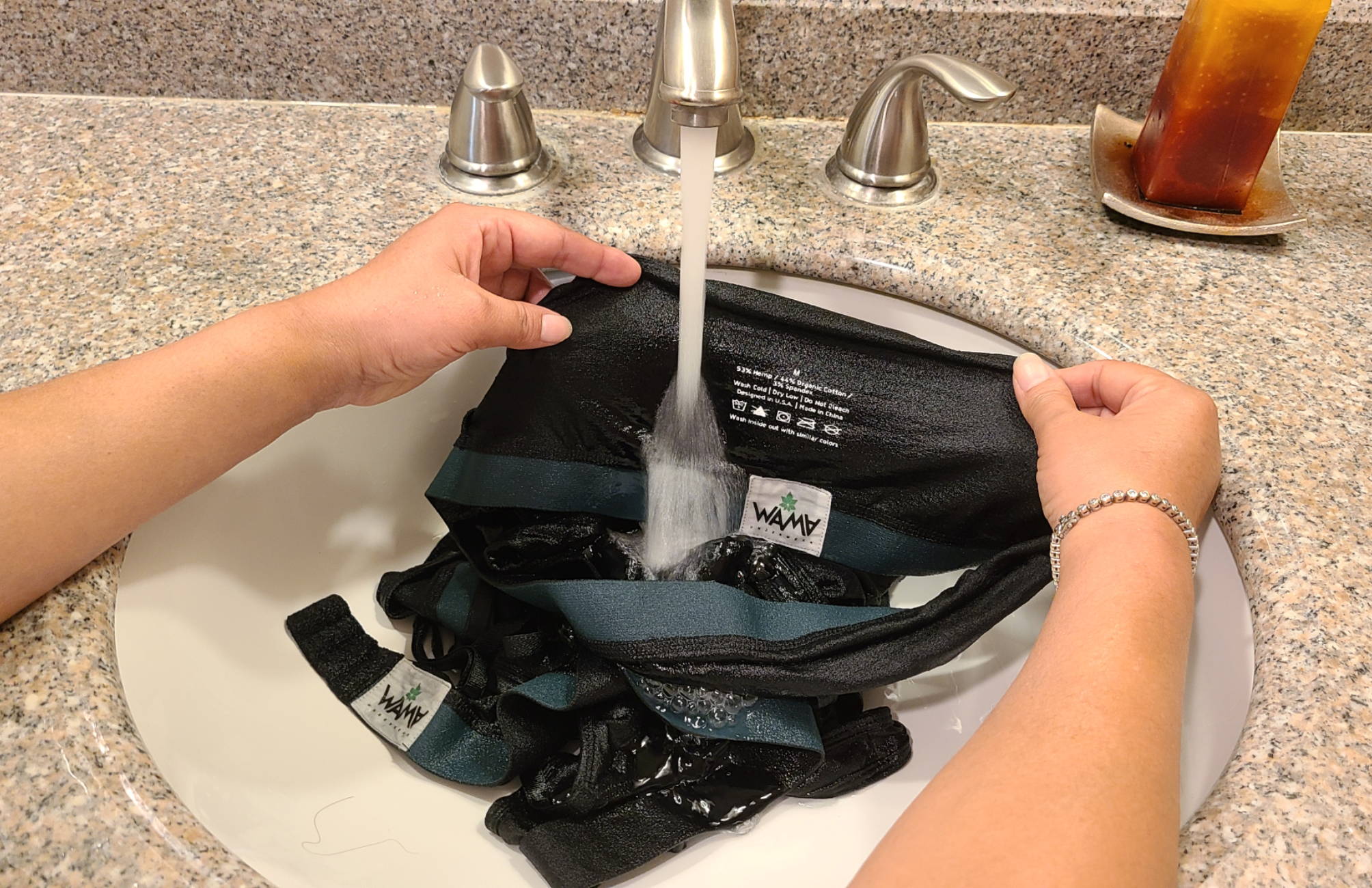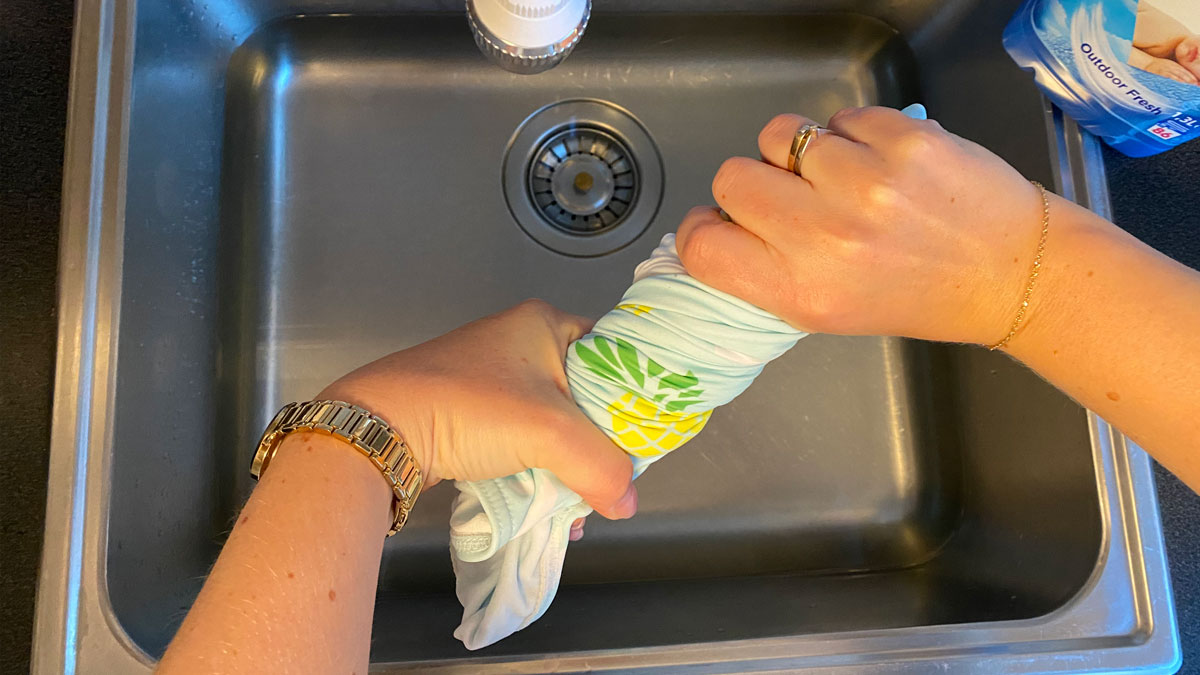

FAQs
How To Get Out A Trapped Fart
Modified: September 23, 2023
Searching for answers to general questions? Find out how to eliminate a trapped fart and get relief with our helpful guide and tips.
(Many of the links in this article redirect to a specific reviewed product. Your purchase of these products through affiliate links helps to generate commission for Under-tec.com, at no extra cost. Learn more)
Table of Contents
How To Get Out A Trapped Fart
Let’s be honest, we’ve all experienced the discomfort of a trapped fart at some point in our lives. Whether it’s due to digestion issues, eating certain foods, or simply holding it in for too long, a trapped fart can cause bloating, abdominal discomfort, and even pain. But fear not! There are simple and effective ways to release a trapped fart and find relief. In this article, we’ll explore some natural remedies that can help you get rid of that trapped gas and restore your comfort.
1. Walking or Light Exercise: Physical activity can help stimulate your digestive system and encourage the movement of trapped gas. Taking a brisk walk or engaging in light exercise, such as stretching or yoga poses, can help release the trapped fart.
2. Deep Breathing Exercises: Deep breathing exercises can not only relax your body but also stimulate the muscles in your abdomen, which can promote the release of trapped gas. Take slow, deep breaths, focusing on relaxing your abdominal muscles.
3. Gentle Abdominal Massages: Massaging your abdomen in a gentle, circular motion can help relieve gas trapped in your digestive system. Start at the lower right side of your abdomen and move clockwise, applying gentle pressure with your fingertips.
4. Dietary Adjustments: Certain foods can contribute to excessive gas and bloating. Avoiding or limiting foods like beans, lentils, cabbage, broccoli, carbonated drinks, and fried or fatty foods can help reduce the chances of trapping gas. Opt for a diet rich in fiber, fruits, vegetables, and whole grains to promote healthy digestion.
5. Over-the-Counter Remedies: If self-care measures aren’t bringing relief, you may consider using over-the-counter remedies like simethicone. Simethicone helps break down gas bubbles, making it easier for your body to pass gas.
Remember, it’s essential to listen to your body and seek medical help if the discomfort persists or if you experience severe pain or other symptoms. In some cases, trapped gas may be a sign of an underlying digestive issue that needs medical attention.
By implementing these natural remedies and making lifestyle adjustments, you can effectively release trapped gas and find relief from the discomfort it causes. So the next time you find yourself dealing with a trapped fart, give these methods a try and let the gas be gone!
Introduction
Imagine this: you’re in a public setting, trying to maintain your composure, when suddenly you feel the discomfort of a trapped fart. You desperately wish for a way to release it discreetly and avoid the embarrassment. Sound familiar? Don’t worry, you’re not alone. Trapped farts are a common occurrence that can happen to anyone, and finding a solution to this problem is essential for our comfort and well-being.
Understanding trapped farts is the first step towards finding a solution. Normally, when we pass gas, it moves through the digestive system and exits the body naturally. However, there are times when gas gets trapped, causing bloating, discomfort, and sometimes even pain. This can occur due to a variety of reasons, including poor digestion, eating gas-producing foods, or holding in our farts for prolonged periods.
In this article, we will explore natural remedies to release trapped farts and regain our comfort. These remedies are easy to implement and can be done in the privacy of our own homes. By following these tips, you can effectively and discreetly get rid of trapped gas and alleviate the associated discomfort.
Some of the natural remedies we will discuss include walking or engaging in light exercise, which helps stimulate the digestive system and encourages the movement of trapped gas. We will also explore deep breathing exercises, which relax the body and stimulate the muscles in the abdomen, aiding in the release of trapped gas. Additionally, we will cover the benefits of gently massaging the abdomen in a circular motion, as this can help relieve gas trapped in the digestive system.
Dietary adjustments can also play a crucial role in preventing gas from getting trapped. We will delve into the foods that are more likely to cause excessive gas and bloating, and provide guidance on which ones to avoid or consume in moderation. Finally, we will discuss over-the-counter remedies, such as simethicone, that can aid in breaking down gas bubbles, making it easier for the body to pass gas.
It’s important to note that while these remedies can provide relief, it’s essential to listen to our bodies and seek medical help if the discomfort persists or if other concerning symptoms arise. Trapped gas can sometimes be a sign of an underlying digestive issue that requires professional attention.
By implementing these natural remedies and making dietary adjustments, we can effectively release trapped gas and find relief from the discomfort it causes. So, if you’ve ever found yourself battling a trapped fart, read on to discover valuable tips and tricks to help you handle this awkward situation with confidence and ease.
Understanding Trapped Farts
Trapped farts, also known as trapped gas or gas buildup, occur when gas gets stuck in the digestive system instead of being released naturally. This can cause discomfort, bloating, and even pain. To better understand trapped farts, it’s important to know how the digestive system works.
When we eat or drink, our digestive system breaks down the food into nutrients and waste products. During this process, gas is produced as a byproduct. This gas can come from various sources, such as swallowed air, the breakdown of certain foods in the gut, or the action of gut bacteria on undigested carbohydrates.
Under normal circumstances, the gas produced in the digestive system is either absorbed into the bloodstream or released through burping or passing gas. However, there are occasions when this gas gets trapped along the way, causing discomfort and bloating.
There are several factors that can contribute to the occurrence of trapped farts:
- Poor Digestion: If the food we eat is not properly digested, it can lead to the production of excess gas in the digestive system. This can happen due to various reasons, such as eating too quickly, not chewing food properly, or having an underlying digestive condition like irritable bowel syndrome (IBS).
- Gas-Producing Foods: Certain foods are known to produce more gas during digestion. These include beans, lentils, cruciferous vegetables (such as broccoli and cabbage), onions, garlic, carbonated drinks, and high-fiber foods. Consuming these foods in excess can increase the chances of trapped gas.
- Swallowing Air: We might not realize it, but we often swallow small amounts of air while eating or drinking. This can happen more frequently if we talk while eating, chew gum, or drink through a straw. Swallowed air can accumulate in the digestive system, contributing to trapped farts.
- Holding in Farts: Sometimes, we may feel the need to hold in a fart due to social or environmental factors. When we hold in gas, it can build up in the digestive system, leading to discomfort and trapped farts.
It’s important to note that trapped farts are usually harmless and resolve on their own. However, if trapped gas is accompanied by severe abdominal pain, persistent bloating, changes in bowel movements, or other concerning symptoms, it’s advisable to seek medical attention. These symptoms could be indicative of an underlying digestive issue that requires professional evaluation.
Now that we have a better understanding of what trapped farts are and some of the factors that contribute to their occurrence, let’s explore natural remedies that can help release trapped gas and provide relief from the discomfort associated with it.
Natural Remedies to Release Trapped Farts
When faced with the discomfort of trapped farts, there are several natural remedies that can help release the gas and provide relief. These remedies are simple, effective, and can be easily done in the comfort of your own home. Let’s explore some of these remedies:
1. Walking or Light Exercise: Engaging in physical activity, such as taking a brisk walk or doing light exercises, can help stimulate your digestive system and encourage the movement of trapped gas. Physical movement can also help relax the muscles in your abdomen, making it easier for the gas to pass.
2. Deep Breathing Exercises: Deep breathing exercises not only promote relaxation but also help stimulate the muscles in your abdomen, facilitating the release of trapped gas. Take slow, deep breaths, focusing on expanding your abdomen as you inhale and contracting it as you exhale.
3. Gentle Abdominal Massages: Massaging your abdomen in a gentle, circular motion can help relieve gas trapped in your digestive system. Start at the lower right side of your abdomen and move clockwise, applying gentle pressure with your fingertips. This massage can help stimulate the movement of trapped gas and alleviate discomfort.
4. Dietary Adjustments: Making adjustments to your diet can play a significant role in preventing or reducing trapped gas. Avoiding or limiting foods that are known to cause excessive gas, such as beans, lentils, cabbage, broccoli, carbonated drinks, and fried or fatty foods, can help reduce the likelihood of gas buildup. Instead, opt for a diet rich in fiber, fruits, vegetables, and whole grains to promote healthy digestion.
5. Over-the-Counter Remedies: If home remedies do not provide sufficient relief, you may consider using over-the-counter remedies like simethicone. Simethicone is an anti-foaming agent that helps break down gas bubbles, making it easier for your body to pass gas.
It’s essential to listen to your body and choose the remedies that work best for you. Everyone’s body is different, so what works for one person may not work for another. It may require some experimentation to find the most effective remedy.
It’s also important to note that these natural remedies are generally safe and provide temporary relief from trapped gas. However, if you experience severe or persistent symptoms, such as intense abdominal pain, bloating, vomiting, or changes in bowel movements, it’s crucial to seek medical attention. These symptoms could be indicative of an underlying digestive issue that requires professional evaluation.
By utilizing these natural remedies and making suitable dietary adjustments, you can effectively release trapped farts and find relief from the discomfort they cause. Remember, prevention is key, so maintaining a healthy diet, eating in moderation, practicing good digestion habits, and allowing yourself to pass gas when needed can help minimize the occurrence of trapped gas in the first place.
Walking or Light Exercise
When faced with the discomfort of trapped farts, one of the simplest and most effective natural remedies is engaging in physical activity, such as walking or doing light exercises. Physical movement can help stimulate your digestive system and encourage the movement of trapped gas, providing you with relief.
Walking is a gentle yet effective form of exercise that can help get things moving in your digestive system. Taking a brisk walk can help increase the contractions of your intestinal muscles, promoting the movement of trapped gas. It also helps to improve blood flow to your abdominal area, aiding digestion and relieving bloating.
Light exercises, such as stretching or yoga poses, can also be beneficial in releasing trapped farts. These exercises help stimulate the muscles in your abdomen, providing gentle pressure that can encourage the gas to pass through your digestive system more easily. Incorporating exercises that involve twisting or bending can be particularly effective in relieving gas buildup.
Not only does physical activity promote the movement of trapped gas, but it also helps relax your abdominal muscles. When you’re stressed or tense, your muscles tend to tighten, which can contribute to the trapping of gas. Engaging in walking or light exercise can help alleviate tension in your abdominal muscles, allowing the gas to be released more freely.
Aside from the benefits of releasing trapped gas, walking and light exercise have numerous other advantages for your overall health and well-being. They help increase circulation, boost energy levels, improve mood, and promote better digestion. Regular physical activity can also prevent gas buildup in the long term by keeping your digestive system functioning optimally.
When implementing this remedy, it’s important to find an activity that you enjoy and that suits your fitness level. Start with a leisurely walk or gentle stretching if you’re new to exercise. Gradually increase the intensity and duration as you become more comfortable. Aim to incorporate at least 30 minutes of moderate-intensity exercise into your daily routine for maximum benefits.
Remember, if you’re experiencing severe pain, have an injury, or have any medical conditions that may limit your ability to exercise, it’s important to consult with a healthcare professional before starting any new exercise regimen.
Walking or engaging in light exercise is a natural and effective way to release trapped farts. Not only does it stimulate your digestive system and promote the movement of gas, but it also provides a plethora of other health benefits. So, the next time you find yourself dealing with trapped gas, put on your walking shoes or roll out your yoga mat and give yourself the gift of movement and relief.
Deep Breathing Exercises
When dealing with trapped farts, deep breathing exercises offer a simple and effective natural remedy. Deep breathing not only promotes relaxation but also helps stimulate the muscles in your abdomen, aiding in the release of trapped gas.
To perform deep breathing exercises, find a quiet and comfortable place to sit or lie down. Close your eyes and take a moment to relax your body and mind. Place one hand on your chest and the other on your abdomen, just below your ribcage.
Begin by taking a slow, deep breath in through your nose. As you breathe in, feel your abdomen expand and rise, allowing the air to fill your lungs. Focus on directing the breath deep into your belly rather than shallow chest breathing.
Once you’ve taken a deep breath in, hold it for a few seconds before exhaling slowly through your mouth. As you exhale, feel your abdomen gently contract, allowing the air and any trapped gas to be released.
Repeat this deep breathing cycle several times, focusing on the rhythm of your breath and the sensation of your abdomen rising and falling. As you continue with the exercises, aim to lengthen your breaths and increase the duration of both the inhalation and exhalation.
Deep breathing exercises help relax your body, reduce stress, and increase oxygen flow throughout your system. By specifically focusing on the breath moving into your abdomen, you engage and stimulate the muscles in your abdominal area, including those involved in digestion.
This stimulation of the abdominal muscles helps promote the movement of trapped gas, making it easier to release. By practicing deep breathing regularly, you can improve the overall functioning of your digestive system, reducing the likelihood of gas being trapped in the future.
In addition to relieving trapped gas, deep breathing exercises offer several other benefits for your well-being. They can help reduce feelings of anxiety, improve focus and concentration, and enhance your overall sense of relaxation and calmness.
Deep breathing exercises can be done anytime and anywhere — whether you’re at home, at work, or even in public. It’s a discreet and effective technique that can bring immediate relief.
However, if you experience severe pain, difficulty breathing, or any other concerning symptoms, it’s important to seek medical attention. Deep breathing exercises are intended to provide relief from trapped gas, but they may not be sufficient to address underlying medical conditions.
So, the next time you find yourself dealing with the discomfort of trapped gas, take a moment to practice deep breathing exercises. Embrace the power of your breath to promote relaxation, stimulate your abdominal muscles, and release trapped farts. You’ll be surprised at how simple and effective this natural remedy can be.
Gentle Abdominal Massages
When it comes to relieving trapped farts, gentle abdominal massages can be a soothing and effective natural remedy. Massaging your abdomen in a circular motion can help relieve the discomfort of trapped gas and promote its release.
To perform a gentle abdominal massage, find a comfortable position either lying down or sitting up. Begin by placing your hands on your lower right abdomen, just above your hip bone. Using gentle, circular motions, move your hands clockwise, gradually making larger circles that encompass your entire abdominal area.
As you massage, apply light pressure with your fingertips, focusing on stimulating the muscles and organs in your abdomen. The gentle pressure can help break up and move the trapped gas, providing relief from discomfort and bloating.
Continue with the circular massage motions for several minutes, paying attention to any areas that feel particularly tender or tight. It’s important to listen to your body and adjust the pressure accordingly, avoiding any painful or uncomfortable sensations.
In addition to promoting the release of trapped gas, abdominal massages can help stimulate digestion, improve blood flow to the abdominal area, and alleviate tension in the muscles. The relaxing nature of the massage can also help reduce stress, which can contribute to digestive issues.
For enhanced benefits, you may consider using oils or creams while performing the abdominal massage. Natural oils like peppermint or ginger oil can provide a soothing effect and help relieve gas and bloating. However, it’s important to test these oils on a small patch of skin first to check for any adverse reactions or allergies.
It’s worth noting that if you have an underlying digestive condition, such as irritable bowel syndrome (IBS) or any abdominal injuries or surgeries, you should consult with a healthcare professional before attempting abdominal massages. They can provide specific guidance and ensure that the massage techniques are suitable for your individual needs.
Overall, gentle abdominal massages offer an easy and self-soothing remedy for trapped farts. By incorporating this technique into your routine, you can stimulate your digestive system, relieve discomfort, and enhance your overall well-being. So, take a moment to give yourself a comforting abdominal massage and release the trapped gas that’s been causing you discomfort.
Dietary Adjustments
When it comes to managing trapped farts, making dietary adjustments can play a significant role in preventing gas buildup and reducing discomfort. Certain foods are known to produce more gas during digestion, and by avoiding or limiting these foods, you can minimize the chances of trapping gas.
One of the primary culprits for excessive gas production is a group of carbohydrates called FODMAPs (fermentable oligosaccharides, disaccharides, monosaccharides, and polyols). These carbohydrates are not easily digested in the small intestine and are fermented by gut bacteria, leading to gas production.
High-FODMAP foods include onions, garlic, wheat, rye, barley, beans, lentils, certain fruits (such as apples, pears, and watermelon), certain vegetables (such as broccoli, cauliflower, and Brussels sprouts), dairy products, and artificial sweeteners. Limiting your intake of these foods or identifying specific triggers that affect you can help reduce the likelihood of trapping gas.
Fiber is an essential component of a healthy diet, but certain types of fiber can also contribute to gas production. Insoluble fiber, found in foods like whole grains, bran, and some vegetables, can be more difficult to digest and may lead to increased gas. On the other hand, soluble fiber, found in foods like oats, fruits, and vegetables, can be more easily digested and may be better tolerated.
It’s important to note that everyone’s digestive system is unique, so it may be helpful to keep a food diary to track which foods trigger gas buildup and adjust your diet accordingly. Gradually introduce specific foods back into your diet to identify the specific culprits that cause discomfort.
Incorporating probiotic-rich foods into your diet can also aid in digestive health and reduce gas production. Probiotics are beneficial bacteria that help maintain a healthy balance in your gut microbiome. Yogurt, sauerkraut, kimchi, kefir, and other fermented foods are great sources of probiotics that can promote a healthy digestion process.
Along with making dietary adjustments to prevent gas buildup, it’s crucial to practice good eating habits. Eating slowly and chewing food thoroughly can help reduce the amount of air you swallow, minimizing the chances of trapped gas. Avoiding carbonated drinks and drinking from a straw can also help reduce the amount of swallowed air.
Lastly, ensuring proper hydration is essential to promote healthy digestion and prevent constipation, which can contribute to gas buildup. Drinking an adequate amount of water throughout the day can help keep your digestive system functioning smoothly and reduce the chances of experiencing trapped farts.
By being mindful of your dietary choices, identifying trigger foods, and practicing good eating habits, you can make dietary adjustments that significantly reduce the occurrence of trapped farts. Remember, it’s important to listen to your body and make adjustments that work best for you. If you have specific dietary concerns or underlying digestive issues, consulting with a registered dietitian or healthcare professional can provide you with personalized guidance and support.
Over-the-Counter Remedies
If natural remedies and dietary adjustments aren’t providing sufficient relief from trapped farts, there are over-the-counter remedies available that can help alleviate the discomfort. One such remedy is simethicone, an active ingredient found in many gas relief products.
Simethicone works by breaking down larger gas bubbles into smaller ones, making it easier for your body to pass gas. It does not reduce the overall amount of gas produced, but it can help relieve symptoms associated with trapped gas, such as bloating and discomfort.
Gas relief products containing simethicone come in various forms, including tablets, capsules, chewable tablets, liquids, and strips. They are widely available at pharmacies and can be used as needed, following the recommended dosage instructions on the packaging or as advised by a healthcare professional.
It’s important to note that while simethicone is generally considered safe for most individuals, it may not be suitable for everyone. It’s recommended to consult with a healthcare professional before using any over-the-counter medication, especially if you have pre-existing medical conditions, are on other medications, or are pregnant or breastfeeding.
In addition to simethicone, there are other over-the-counter medications that may offer relief from trapped gas for certain individuals. These include activated charcoal tablets, which can bind to gas and toxins in the digestive system, and lactase supplements, which can help break down lactose in individuals who are lactose intolerant and experience gas as a result of consuming dairy products.
It’s important to recognize that over-the-counter remedies are intended for temporary relief and should not be relied upon as a long-term solution. If you find that you require frequent or ongoing use of these remedies, it’s advisable to seek medical evaluation to address the underlying cause of your trapped gas.
While over-the-counter remedies can provide relief from symptoms, it’s still essential to consider other natural remedies and lifestyle adjustments for long-term management. These include dietary modifications, physical activity, stress reduction techniques, and practicing good eating habits.
Remember, if you have severe or persistent symptoms, it’s important to seek medical attention. Trapped gas can sometimes be a symptom of an underlying digestive issue that requires professional evaluation and treatment.
By considering over-the-counter remedies and utilizing other natural approaches as part of a comprehensive plan, you can find relief from trapped farts and improve your overall digestive comfort.
When to Seek Medical Help
While trapped farts are usually harmless and can be relieved through natural remedies and lifestyle adjustments, there are instances where seeking medical help is necessary. It’s important to be aware of the signs and symptoms that may indicate an underlying issue requiring professional evaluation and treatment.
If you experience any of the following symptoms, it’s advisable to seek medical attention:
- Severe or Prolonged Pain: If you’re experiencing intense, sharp, or persistent abdominal pain that doesn’t subside with home remedies, it’s important to consult with a healthcare professional. Severe pain can be a sign of a more serious condition, such as gallstones or intestinal obstruction, which require medical intervention.
- Change in Bowel Movements: If you notice significant changes in your bowel habits, such as persistent diarrhea, constipation, or bloody stools, it’s important to seek medical evaluation. These changes can be indicators of underlying digestive disorders that require diagnosis and treatment.
- Unexplained Weight Loss: If you’re experiencing unexplained weight loss along with trapped gas and other digestive symptoms, it could be indicative of a more systemic issue. Unintended weight loss should always be evaluated by a healthcare professional to rule out potential underlying causes.
- Severe Bloating or Distention: While some bloating is normal, persistent and severe bloating or distention that doesn’t resolve with lifestyle adjustments may warrant medical attention. It could be a sign of conditions like irritable bowel syndrome (IBS), inflammatory bowel disease (IBD), or other gastrointestinal disorders.
- Other Concerning Symptoms: If you’re experiencing additional symptoms along with trapped gas, such as vomiting, fever, unexplained fatigue, or loss of appetite, it’s important to seek medical help. These symptoms could indicate an infection, inflammation, or other underlying medical conditions.
It’s important to trust your instincts and seek medical attention if you have any concerns about your symptoms. A healthcare professional can evaluate your condition, perform necessary diagnostic tests, and provide appropriate treatment based on your individual needs.
Remember, prevention is always better than cure. By maintaining a healthy lifestyle, making dietary adjustments as needed, practicing good eating habits, and managing stress levels, you can reduce the likelihood of experiencing trapped farts and other digestive issues.
If you’re unsure about when to seek medical help or have any questions or concerns regarding your digestive health, it’s always best to consult with a healthcare professional. They can provide you with personalized guidance and ensure that you receive the appropriate care for your specific situation.
Conclusion
Dealing with trapped farts can be uncomfortable and even embarrassing at times, but rest assured that there are natural remedies and lifestyle adjustments that can help you find relief. Understanding the causes of trapped farts, such as poor digestion, gas-producing foods, swallowing air, and holding in farts, is the first step towards managing and preventing this issue.
In this article, we explored various natural remedies to release trapped farts. Walking or engaging in light exercise can stimulate your digestive system, while deep breathing exercises can relax your body and stimulate the muscles in your abdomen. Gentle abdominal massages can promote the movement of trapped gas, and dietary adjustments can help prevent excessive gas production. When these measures aren’t sufficient, over-the-counter remedies like simethicone may provide temporary relief.
It’s important to remember that everyone’s body is unique, so what works for one person may not work for another. It may require some trial and error to find the most effective remedies and lifestyle adjustments for managing trapped farts. Additionally, if you experience severe or persistent symptoms, it’s crucial to seek medical attention to rule out any underlying digestive issues.
By implementing these natural remedies, making suitable dietary adjustments, and being mindful of good eating habits, you can effectively release trapped gas and find relief from the discomfort it causes. Maintaining a healthy lifestyle, managing stress levels, and staying hydrated are also crucial for optimal digestion and preventing gas buildup.
Remember, while trapped farts can be an uncomfortable and bothersome issue, it is a normal part of the digestive process. Learning to manage and prevent trapped gas can help you feel more comfortable and confident in any social situation.
So, the next time you find yourself dealing with a trapped fart, walk it out, take a deep breath, give yourself a gentle abdominal massage, make dietary adjustments, or consider over-the-counter remedies. Empower yourself with the knowledge and tools to manage trapped farts, and regain your comfort and confidence.










